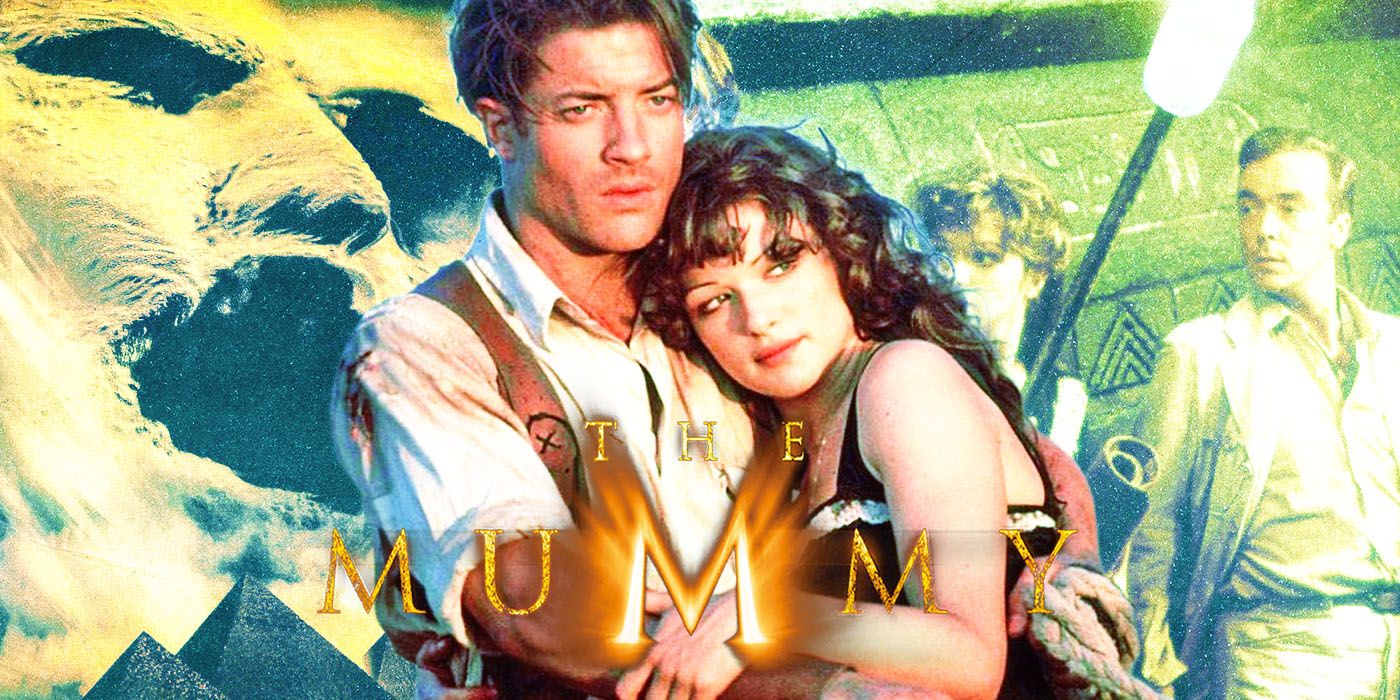Stephen Sommers’ The Mummy (1999) begins in 1290 BC. Courtesy of Ardeth Bay (Oded Fehr), voiceover sets the scene: “Thebes, City of the Living. Crown jewel of Pharaoh Seti I. Home of Imhotep, Pharaoh’s high priest, keeper of the dead; birthplace of Anck-su-Namun, Pharaoh’s mistress.” As it turns out, Anck-su-Namun (Patricia Velasquez) is also the object of affection of Imhotep (Arnold Vosloo) — which is strictly verboten. A smudge in the mistress’ gold body paint tells the Pharaoh that Anck-su-Namun has been tarnished. Moments later, Imhotep and Anck-su-Nanum kill the Pharoah. Imhotep absconds into the night, promising to resurrect Anck-su-Namun as she stays to face the wrath of the guards, the Medjai.
Later, in Hamunaptra, the City of the Dead — where most of The Mummy‘s action will occur — Imhotep and his loyal subjects, fanatical cultists who worship the Book of the Dead, attempt to revivify Anck-Su-Namun. But the Medjai, hip to the goings-on, ambush Imhotep and his followers, mummifying the whole lot and sending Anck-su-Namun’s spirit back into a viscous black puddle of damnation. Oh, and the guards also subject Imhotep to the Hom-Dai, a cursed ritual that involves cutting out his tongue, placing his writhing body in a sarcophagus, and, as a cherry on top, covering his body in scarabs. It’s genuinely horrific stuff, but it makes for a great backstory to the last great adventure film of the ’90s.
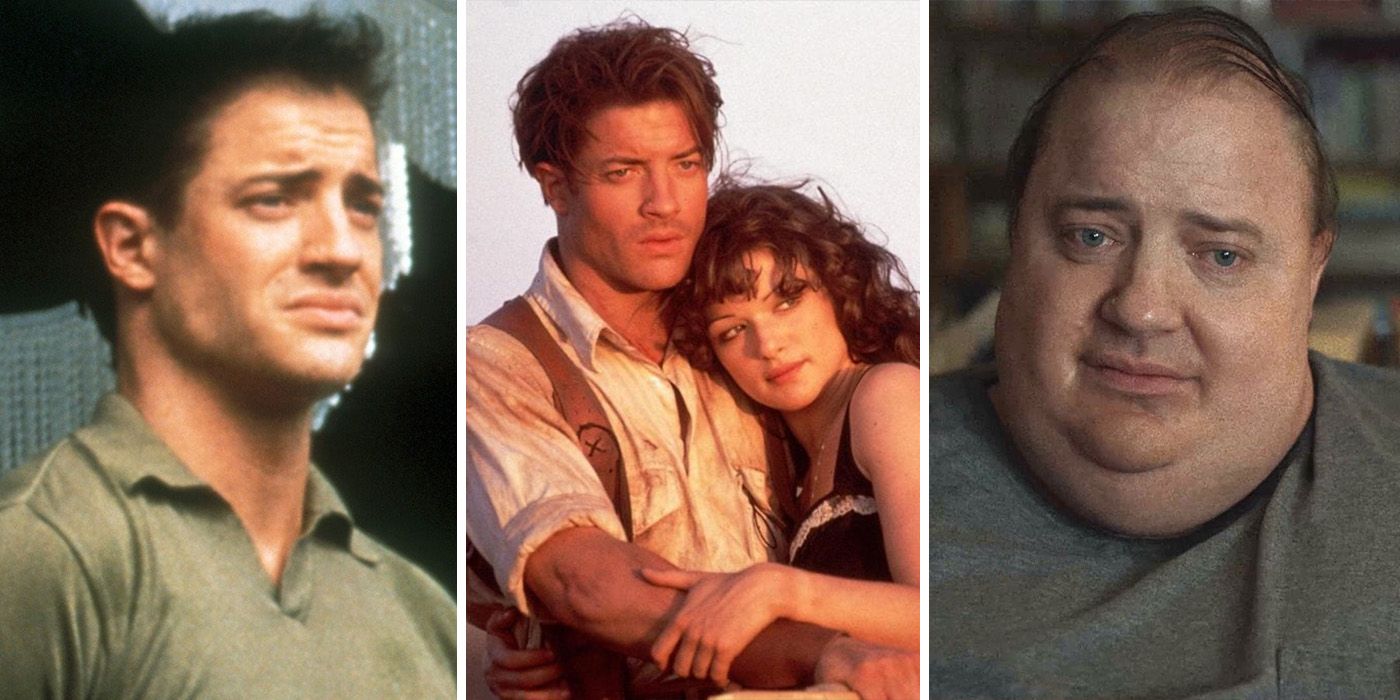
10 Best Brendan Fraser Movies, Ranked By Rotten Tomatoes
Brendan Fraser is a Hollywood fan-favorite, amassing a following of fans thanks to roles in many great movies, all ranked by Rotten Tomatoes’ meter.
Flash forward a few centuries later to 1923, and Hamunaptra is now a battleground between colonialist soldiers, who’ve happened upon the much-fabled City (rumored to be made of gold), and the Medjai, who’ve continued the tradition of protecting the City’s dark secrets. Among the line of soldiers is American Rick O’Connell (Brendan Fraser), who has a brief encounter with a sand-borne apparition before fleeing into the desert. Observing from a sand dune, Ardeth Bay remarks: “The desert will kill him.”
Just one final nudge further, and it’s now 1926. Rick is in a Cairo prison, due for hanging. Meanwhile, ditzy British librarian Evelyn Carnahan (Rachel Weisz) does her best vocal imitation of Robin Hood: Men in Tights‘ Amy Yasbeck while knocking down domino rows of shockingly unsteady bookshelves. Evelyn, or Evie, for all of her clumsiness, is a self-styled Egyptologist with a particular interest in artifacts, which will figure heavily into the narrative. On the other hand, Evie’s brother, Jonathan (John Hannah), has just filched an artifact that assures the duo of the City of the Dead’s existence, leading them to Rick.
The Mummy is Full of Elaborate Deaths but Retains a Solid PG-13 Rating
Despite the numerously grotesque death sequences in The Mummy, it’s a surprisingly bloodless film
What strikes one watching The Mummy, whether it’s the first or thousandth time, is that the introduction — from Thebes to Hamunaptra to Cairo and back to Hamunaptra — is surefooted and handily precise. The details are written as if carved into stone tablets, immaculate in conveying precisely what we, the viewers, need to know while urging the plot forward. The tried-and-true mechanics that govern The Mummy‘s storytelling most overtly aim to capture the cinematic adventures of Indiana Jones, and they are familiar but never tedious. Fraser and Weisz lead the charge, with Hannah and Kevin J. O’Connor — who plays Beni Gabor, the duplicitous, fez-wearing guide leading the competing group of archaeologists to Hamunaptra — providing ample humor to lubricate the already dangerously slick story. What keeps the film from slipping into forgettability is that no adventure film seems to have as much fun as The Mummy.
And what a joy it is to see all of the ways supernatural forces can kill a person. Vosloo’s Imhotep, previously divvied amongst canopic jars and rendered into bug excrement, is awakened, as monsters are wont to do, and embarks on a rampage to find a surrogate for Anck-su-Namun. Along the way, Imhotep harvests organs to restore his flesh, twirls into sandstorms for fast transit or more malevolent purposes, and leads an undead army of sickle-wielding goons. As for the fully human players, they’re subjected to the aforementioned organ harvesting, suffocation by sand, subdermal scarab incursions, and much more besides. But what makes it all so palatable, other than the pleasure of watching dangerous adventures from the safe vantage of the screen, is that the violence, though cartoonish, is never needlessly gory. The terror comes in the form of surprise, invention, and the apparent sense that the filmmakers wanted to give the audience their money’s worth. Although there are numerous deaths, often immensely painful ones, this isn’t a gory film by any means.
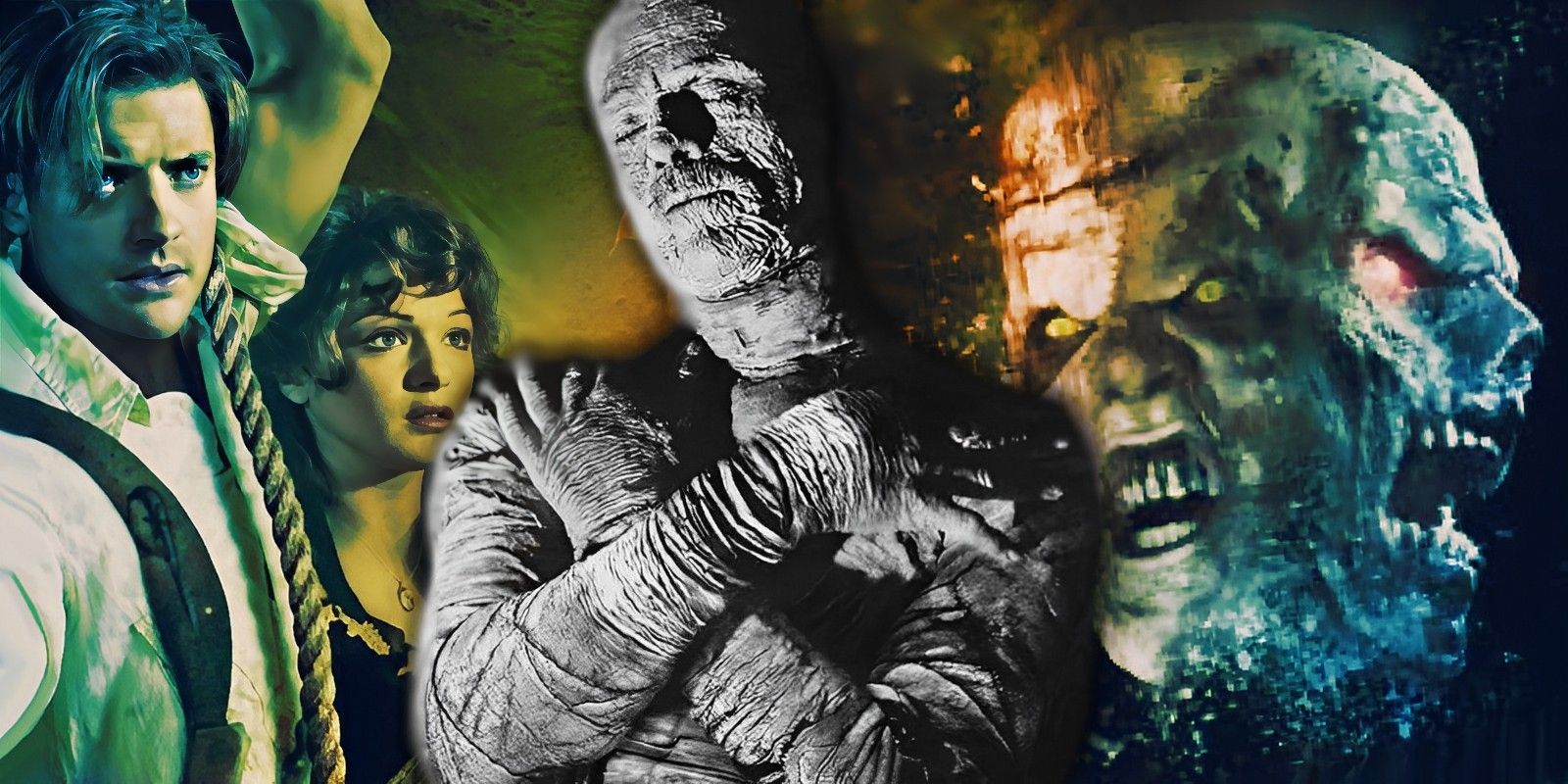
10 Best Mummy Movies, Ranked
The Universal Monsters are absolutely terrifying, and one of the scariest is The Mummy. There are many killer mummy movies to prove it, too.
Notably, The Mummy establishes a pace that never lets up through its 124-minute runtime. Here’s a film whose breeziness is a boon rather than a sign of fluff. As we’re whisked from one exotic locale to another and ultimately thrown into the Hollywood-ized kill contraption disguised as a dusty tomb, there is no shortage of thrills — and, of course, characters who will offer unsolicited commentary, underlining the absurdity of the whole enterprise. As far as Universal Monsters go, no other creature feature seems so invested in hand-delivering mock-up specs for a theme park attraction.
The 1999 Version of The Mummy is Entirely Ridiculous and Undeniably Charming
Led by Brendan Fraser, the cast of The Mummy is in on the fun, and their joy is palpable on screen
In the 25 years since the film’s release, The Mummy has been subject to no shortage of retroactive analysis. The film is an almost perfect storm of elements that summon nostalgia-based praise. It represents a now-bygone era in which globe-trotting adventurers could dabble in fantastical, possibly world-ending scenarios and still find time to toss out one-liners. See, for example, 2017’s version of The Mummy, starring Tom Cruise, from the rightfully scrapped “Dark Universe,” in which no one seems to be enjoying themselves, and all efforts are spent in service of transmitting the most dire, downbeat vibes. The dully gray CG noise that clutters the screen doesn’t help its case. Even the dated graphics in the 1999 film are forgivable because they’re in service of the story and necessary means of building the world.
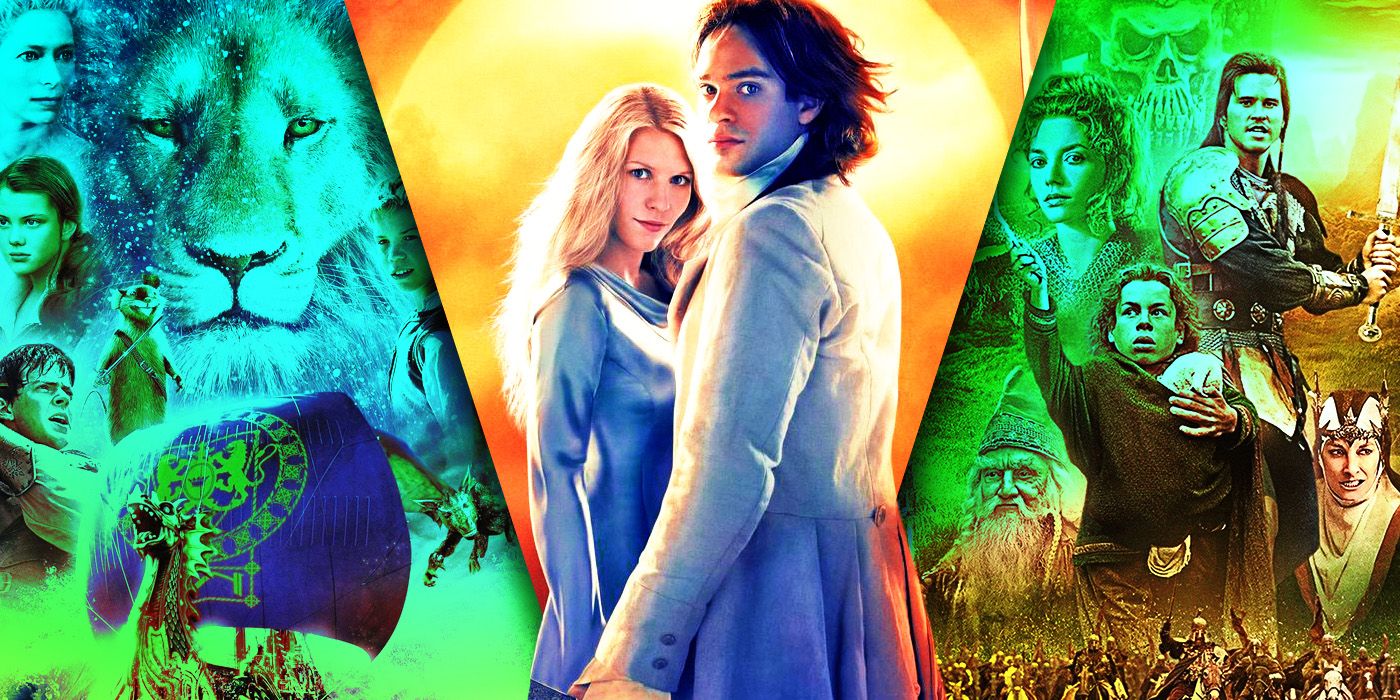
15 Fantasy Movies That Feel Like A Dungeons & Dragons Campaign
Dungeons & Dragons incorporates many elements found in other fantasy films, not just Honor Among Thieves.
There are also qualities of The Mummy that have, understandably, rubbed people the wrong way — issues that have always been prevalent but perhaps are most compounded when time seems to erase any discussion in favor of wholesale admiration. Regarding representation, the film makes no effort to be equitable. Egyptian characters in the movie are walking tropes, either vessels to convey portentous statements or background characters intended to provide an air of exoticness. In other ways, The Mummy rejiggers historical details to the point that its influences are more closely linked to other mummy-related pop media than any historical antecedent. Some people feel that The Mummy should be written off entirely for its failings, and they’re not wrong. The film’s shortcomings are pervasive, not just exclusive to globe-trotting adventure films but to mainstream blockbusters everywhere whose blueprints are older films where race-swapping was just one of many questionable elements.
For those uncomfortably comfortable ignoring the glaring problems of adventure stories or those who can still enjoy a film despite these problems, The Mummy is a rollicking foray into a world best seen as bearing the likeness of reality but comprised entirely of fiction. Brendan Fraser has never been better, and Stephen Sommers, whose credits include The Mummy Returns (2001), hasn’t done anything else that feels nearly as alive with the pleasure of moviemaking. (Apologies to fans of 2009’s G.I. Joe: The Rise of Cobra.) The Mummy, for all of its problems, exudes an energy that smacks of yesteryear when a set could be dressed up as any location so long as a title card spelled it out for the audience. There’s something ineffable about what The Mummy represents, a forever-fleeting feeling tied to old movies, and something beneficial about its having been lost in the intervening years between the film’s release and now.
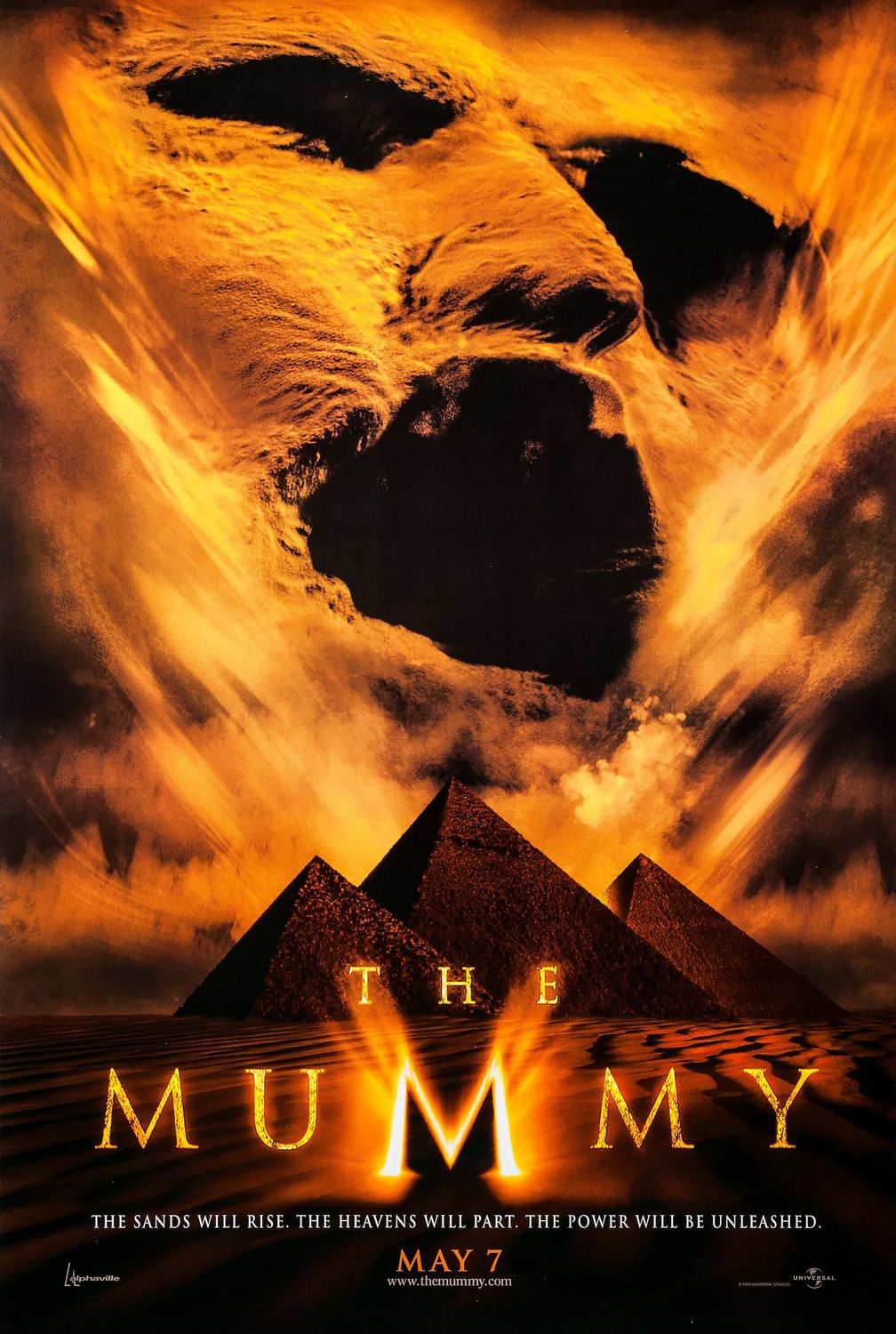
The Mummy (1999)
At an archaeological dig in the ancient city of Hamunaptra, an American serving in the French Foreign Legion accidentally awakens a mummy who begins to wreak havoc as he searches for the reincarnation of his long-lost love.
- Director
- Stephen Sommers
- Release Date
- May 7, 1999
- Writers
- Stephen Sommers , Lloyd Fonvielle , Kevin Jarre
- Runtime
- 2 Hours 4 Minutes
- Main Genre
- Adventure
- Producer
- Sean Daniel, James Jacks
- Production Company
- Universal Pictures, Alphaville Films
- Brendan Fraser has never been better than as Rick O’Connell
- The family-friendly PG-13 rating is less a limitation than a challenge to offer creative thrills
- The story moves at a lightning pace, never letting up throughout its 2hr runtime.
- The Mummy engages in several racist tropes, which deflate the experience.

